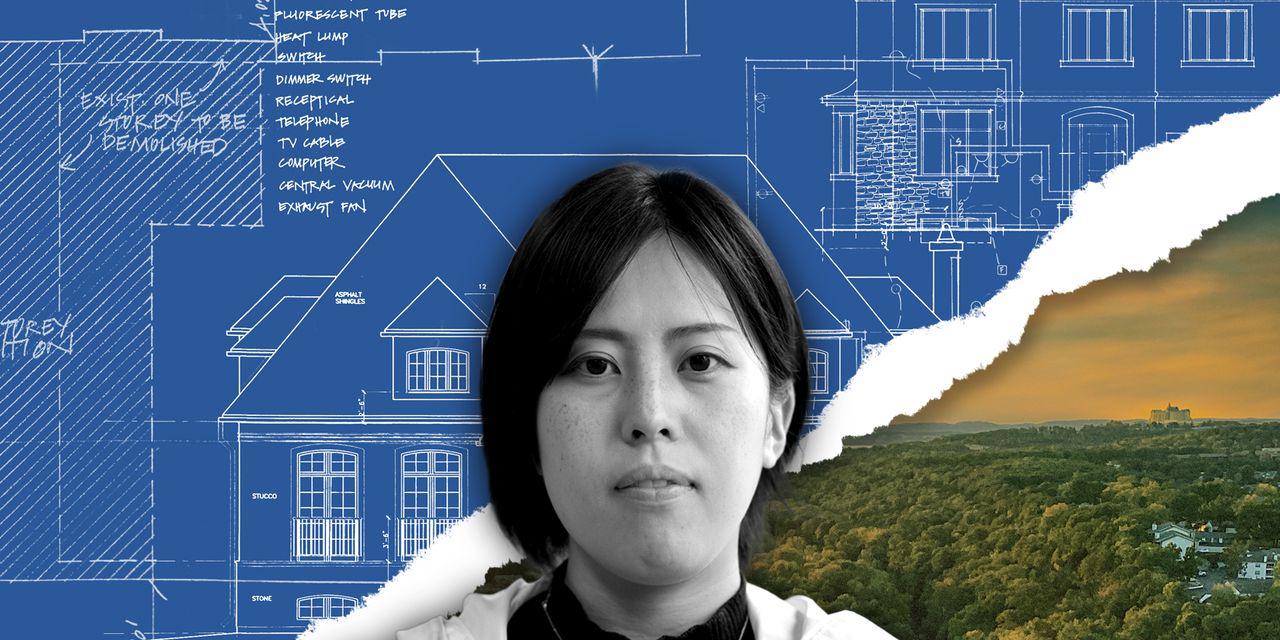Jaina Pallasigui, a public-health professional, started investing in real estate in the Midwest in December 2021.
She bought a home three hours outside of Indianapolis, in Evansville, which she is renting out to long-term tenants. Although she is actually based in Laguna Niguel, Orange County, Calif., Pallasigui found that investing in the Midwest was a lot more affordable than her hometown.
Her first home in Evansville cost less than $50,000. “It was $48,000, and I did a conventional loan, with a down payment of 20%,” Pallasigui told MarketWatch. She has since bought two more single-family homes.
Pallasigui said she was introduced to real-estate investing by a friend who had just bought a home in Indiana. When he told her that he had bought a property for just $40,000, she was very surprised.
She will close on her first fourplex in Evansville in a week, she said. “It just really opened my mind to what was possible in the Midwest because I live in a bubble here in Southern California,” Pallasigui said.
For many home buyers, the real-estate market hasn’t changed much since the pandemic. In fact, it’s gotten worse with multiple offers, high home prices, and high mortgage rates all making it harder to buy a home.
But for aspiring homeowners who are open to relocating, or have the ability to work remotely, there are some good — and affordable — options left in the U.S., according to a new report from Realtor.com.
Most of those affordable housing markets are in the Midwest, according to the Wall Street Journal/Realtor.com Emerging Housing Markets Index, released this week.
(Realtor.com is operated by News Corp
NWSA,
subsidiary Move Inc., and MarketWatch is a unit of Dow Jones, also a subsidiary of News Corp.).
“The top housing market in the Midwest is near a flagship campus of a major university, and has low unemployment. It’s home to several big-name employers, and has attracted interest from investors. ”
The index looks at the 300 most populous metro areas in the U.S., and ranks them based on the real-estate market’s characteristics such as demand and supply, as well as the quality of life, as measured by unemployment, amenities available, shops nearby, and so on.
“Similar to previous quarters, Summer 2023’s emerging markets continue to lean heavily on affordability,” the report stated. “Home list prices in all but four of the top 20 markets are lower than the median-priced U.S. home for sale, which was $445,000 in June.”
The Midwest has gained prominence in recent months: Many real-estate investors have also started moving towards the Midwest, as they find the potential for higher rental income in those markets.
Related: ‘The housing recession is over,’ real-estate group says, as pending home sales tick up for the first time in 4 months
Avoid areas with too much supply
“The summer’s market is neither as red-hot as previous years, nor free-falling as many feared it might. Instead, the market is a display of the tension between a smaller number of buyers looking for a deal and low for-sale inventory preventing the price drops that buyers were hoping for,” the Realtor.com report found.
But investors who are seeing rent growth fall are consequently shifting their money into Midwestern markets, where they are still finding slow but steady growth, according to recent data from CoStar Group
CSGP,
Other regions have suffered from too much supply. Homebuilders and developers piled into the Sun Belt hoping to match the flow of people moving to the state. Looking at building permits through November 2022 and comparing it to the year before, the National Association of Home Builders found that builders were most active in the south.
After a months-long surge, rents are finally cooling off — particularly in the Sun Belt, as a result of supply hitting the market. Before and during the pandemic, the Sun Belt led the nation in rents. The average annual rent growth in 2018 for the region was 3.3%, as compared to just 2.4% in the Midwest, CoStar data showed.
The S&P Case-Shiller index recently noted that the Midwest posted the strongest home-price gains in the month of May, with Chicago leading the 20-city index, followed by Cleveland.
Low unemployment and affordable prices
The highest-ranked emerging housing market according to WSJ/Realtor.com was Lafayette-West-Lafayette in Indiana, followed by Fort Wayne and Elkhart-Goshen, also in Indiana.
The Lafayette-West Lafayette metro area is outside of the city of Indianapolis and two hours south of Chicago. Purdue University is based in the metro, and also has several big-name industrial employers based there, as noted on the city’s website. Realtor.com also ranked it as the top market last quarter.
The median price of a home listed in the Lafayette-West Lafayette metro area is $355,000, according to Realtor.com. The city has a population of around 225,000 and an unemployment rate of 3%.
Fort Wayne and Elkhart-Goshen, second and third on the rankings, also have relatively affordable homes with a median home listing price of $350,000 and $285,000 respectively.
Here’s the top 10 emerging housing markets, with the median price of homes in the area:
Read the full article here





